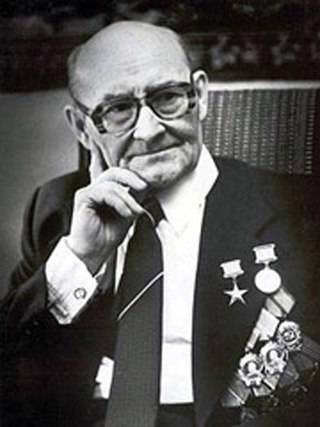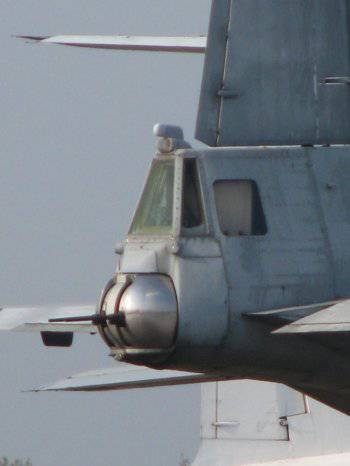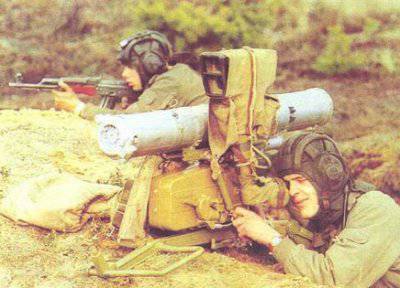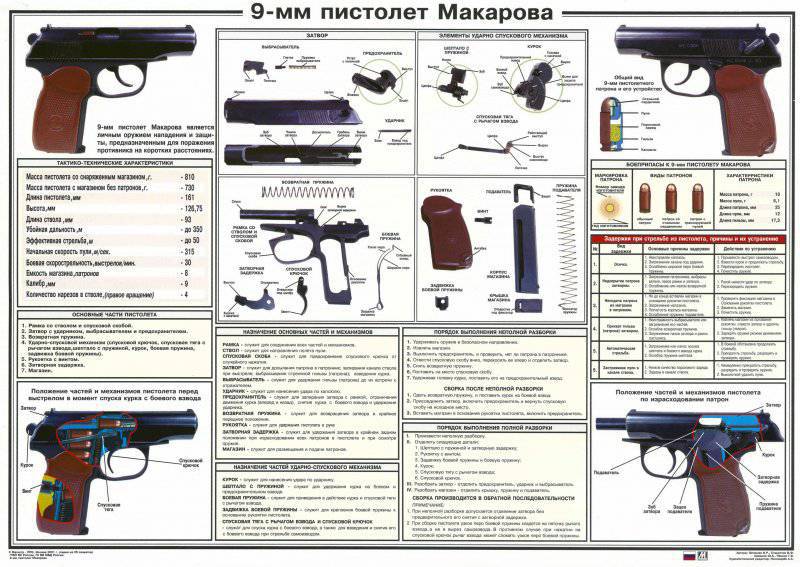Russian gunsmith Nikolai Makarov
 Every time has its own symbols. According to them, we accurately determine one or another era. "Colt" and "Winchester" evoke the Wild West, "Mauser" and leather jacket - and in front of us is revolutionary Peter. The carts with the “Maxims” and budenovki symbolize the fratricidal years of the Civil War, and the thirty-three, the “Katyusha” and the PCA are the “last frontiers” of the Great Patriotic War. The Soviet era at the time of its highest take-off and subsequent rapid collapse was marked by modest in appearance, but inexpensive and unusually "tenacious" Kalashnikovs and Makarovs.
Every time has its own symbols. According to them, we accurately determine one or another era. "Colt" and "Winchester" evoke the Wild West, "Mauser" and leather jacket - and in front of us is revolutionary Peter. The carts with the “Maxims” and budenovki symbolize the fratricidal years of the Civil War, and the thirty-three, the “Katyusha” and the PCA are the “last frontiers” of the Great Patriotic War. The Soviet era at the time of its highest take-off and subsequent rapid collapse was marked by modest in appearance, but inexpensive and unusually "tenacious" Kalashnikovs and Makarovs.Two types of small weapons They contain the best qualities of a national design school - simplicity, unpretentiousness in production and use, reliability and highest efficiency.
Nikolai Fedorovich Makarov was born on the Ryazan land in the village of Sasovo into the family of a locomotive driver on the day that later became significant for the whole country, 9 of May 1914 of the year. For parents, he was the last, sixth, child. My father could not feed such a large family, so they sent Nicholas to his grandfather in the village of Tankachevo. There he spent his childhood. Only a thirteen teenager, he returned to his parents in Sasovo. However, after the end of the six-year-old Kolya left the paternity house again, going to Ryazan, located nearby, to enter the factory apprenticeship school.
In 1931, Makarov, a mechanic, worked at the repair section of the Sasovsky railway depot, and soon even became an assistant driver. It seemed his fate was determined, but education for the young railway was still in the first place. Purposeful, stubborn lad in 1936 externally graduated from the labor school (original preparatory faculties of that time) and went to Moscow to enter one of the best technical educational institutions of Russia - the famous Moscow Higher Technical School named after NE Bauman. Here, he was offended by an offensive slip, for enrollment, he did not get just a single point. However, at that time not only applicants came to the exams in Moscow and St. Petersburg universities, but also representatives of numerous provincial educational institutions. They stood "on the pickup" of the stupid, but failed to do guys, like Nikolai Makarov. One such representative, originally from the Tula Mechanical Institute, offered several sensible guys to enroll in their institute. Nicholas, along with the others, agreed, but he made an appointment with the rector of Moscow Technical Technical University. In a short conversation, the rector promised Nicholas to enroll him in the Moscow Higher Technical School, if he manages to pass the first session at the Tula Institute as "excellent."
The Tula Mechanical Institute was one of the main personnel forges for a rapidly developing defense industry. Nicholas enrolled in the faculty of gunsmiths. Both the first and all subsequent sessions, he passed only "excellent". However, he did not return to Moscow. It was in Tula that he first understood his vocation when, while still a student, he took part in the development of the original design of a hand grenade.
In June, the 1941 of the fifth year, the fifth year student Makarov, passed his pre-diploma practice. In the first days of the war, he was sent along with other graduates to the Zagorsky Mechanical Plant, where G.S. Shpagin urgently established the production of their famous PCA. Due to the dangerous situation prevailing near Moscow by the autumn of 1941, the Zagorsk plant with all the equipment and personnel was evacuated away from the front line to the town of Vyatskiye Polyany, Kirov region. Echelons traveled to their destination for three weeks, often falling under the bombing.
The young shift master Makarov was lucky, he worked under the authority of Georgy Semenovich himself. The legendary gunsmith, who noticed the design vein in Nikolai Fyodorovich, was the first to draw him to creative work. A capable engineer, who quickly became a senior master, was appointed the lead designer of the plant responsible for the production of PCA.
The old design school, conditionally it can be called Mosinskaya, worked according to sketches, but not according to drawings. In fact, the work was carried out at random, by trial and error. So Tokarev, Degtyarev, Shpagin and many other outstanding domestic designers worked. The new generation of gunsmiths of the forties and fifties already relied in their developments on precise mechanical and mathematical calculations. And one of the first who introduced these calculations to the practice of design work was Nikolai Fedorovich.
In the 1943 year, after a break in the war, an order was issued by the People's Commissar of Defense to send unfinished graduates of technical universities to graduate. Nikolai Fedorovich said goodbye to the plant that had become his own, and went to Tula to complete the defense of the graduation project interrupted by the war. The main theme was the work on the creation of a new powerful and reliable machine, adapted for the intermediate cartridge of the 1943 model of the year just adopted. In 1944, Makarov defended his project “perfectly”, which, as a promising one, was even sent to the Main Artillery Directorate. But at that time the submachine gun of the A.I. design began to arrive in the troops. Sudaeva and the development of the Makarov automaton was postponed until better times.
Naturally, Nikolai Fyodorovich was terribly upset, but did not allow himself to despair. Moreover, at the same time one of the most important events occurred in his fate. Thirty-year-old Nikolai met the love of his life at the institute. She appeared as a young student, a beauty and just Nadya, a girl of very strict rules.
A thin, short and no longer young student did not at first attract the attention of a sophomore. But Nicholas was persistent in his advances, and soon Makarov had already moved into the house on the outskirts of Tula, in which she lived with her parents, as her husband. The resettlement passed without hassle, because all his property consisted of one plywood bag, in which lay three volumes of the encyclopedia, dumbbells and a tracksuit. My mother-in-law liked Nicholas; with her unmistakable feminine flair, she realized that her daughter with her husband would be like behind a stone wall. And indeed, this couple has lived, albeit a difficult, but happy life.
And soon Makarov, a design engineer who graduated with honors from a university, was assigned to Moscow. It would seem that the youthful dream of working and living in the capital of Russia was fulfilled. But on the way stood an insurmountable obstacle - Nadia. The young wife refused to move to a foreign city for her. The circumstances of failure were the most prosaic and, at the same time, practical. The move required her to move from one institution to another (which was extremely difficult at that time), in the capital she was deprived of the help and support of her relatives. Nikolay, after some hesitation, decided to abandon the conquest of the capital and return to Tula. The departure was accompanied by a grandiose scandal, the metropolitan authorities were determined against the loss of a talented and promising engineer, but Nikolai Fedorovich knew how to insist on his own. After some time, he got a job in the Tula Central Design Bureau-14, later transformed into the Instrument Engineering Design Bureau.
Just at that time, a competition was announced for the development of new types of small arms for the Soviet Army. As part of the competition, the task was to create short-barreled "personal" weapons for servicemen to replace outdated Tokarevs. The new pistol was supposed to be designed for 7,6 caliber or 9 millimeters, to have great accuracy of fire, to have a small weight and size, to meet numerous criteria of reliability and survivability during operation. The initial speed of the bullet was to reach three hundred meters per second.
The competition was attended by venerable designers with their teams, among them F.V. Tokarev, S.A. Korovin, S.G. Simonov, K.A. Baryshev and many others. Nikolay Fedorovich at that time was completely absorbed in his TsKB-14 development aviation guns. The management invited him to take up the creation of a new pistol at the same time. Makarov got into an idea and set to work with excitement. During this period, many openly scoffed at a shy engineer, pointing to the abundance of big names participating in the competition. However, even if Makarov was shy, his zeal and industriousness were fantastic. And also a unique flair that helped to find a solution to problems that puzzled other gunsmiths. Twenty hours a day, Nikolai Fedorovich worked in the workshop. Details were designed, manufactured, tested and sent for revision.
The approved tactical and technical requirements for the pistol required the overcoming of a considerable number of difficulties. Especially they were “created” by a short and thick 9-millimeter cartridge, better known, while “ultra”, which stuck even with a microscopic bias. The original constructive solution of this problem found by Makarov went against the well-established classical canons of making small arms, but completely eliminated this shortcoming. The first sample made according to the new scheme, earned, as they say, without a bitch, without a hitch.
It is time to state tests. They were held in the 1949 year at the snow-covered Shurovsky range, not far from the village of the same name. Each gunsmith presented his own version of the gun. For clarity, they added another fifteen foreign samples. After the first series of tests and tests, the weapons of the two designers, KA, reached the final. Barysheva and N.F. Makarova. Baryshev pistol outnumbered Nikolai Fyodorovich's pistol in firing accuracy, but Makarovsky was much more technologically advanced in production, and therefore cheaper. The weapon consisted of only thirty two parts against forty at the competitor, thereby exceeding it in operational parameters, in other words, the gun was easier to handle, easily disassembled and assembled without the use of any additional tools.
At the final stage of testing, a high government commission subjected the experienced pistols of both designers to the toughest test of survivability. They then dumped in the sand, then thickly lubricated, then, conversely, completely rid of grease with gasoline, heated to sixty degrees, or cooled to forty. And with all this, the gun had to withstand at least three thousand shots! Even today, none of the well-known brands of this type of weapon is not able to achieve such indicators under similar conditions.
The most severe tests of water, mud, snow and temperature changes could withstand only one Makarov pistol. Many years later, even Konstantin Aleksandrovich admitted that the Makarov pistol had surpassed its design, and the victory of Nikolai Fyodorovich was deserved and fair. In the same 1949 year, the first batch of pistols in the amount of five thousand units was manufactured at Izhevsk Mechanical Plant. Pilot release was designed to ensure that the weapon was tested in the army. Two years later, the Makarov pistol was finally adopted by the Soviet Army.
To date, the Izhevsk plant alone has produced at least five million copies of such weapons. The number of pistols issued abroad under licenses, which the Soviet political leadership distributed to "fraternal" parties and "friendly" regimes, is not known for certain. At the end of the last century, an English magazine specialized in a series of surveys, trying to determine the best weapon of the twentieth century. The first in the “pocket pistol” category was specifically “Makarov”.
For more than fifty years, the pistol of Nikolai Fyodorovich was in service with not only the officers of the Soviet Army, they were armed with police, assault detachments of special forces, the Emergencies Ministry and other security units. Curiously, at the beginning of the spaceflight era, all the first spacecraft had this gun in their emergency stacking. In March, cosmonauts Pavel Belyaev and Alexei Leonov made an emergency landing in the deep taiga of 1965. Their search continued for two days and only thanks to shots from Makarov, the search team was able to locate the astronauts. On the basis of the original design, a whole family of new pistols was created: gas (the most popular IL-79), service (IL-71 and MP-448 Skif), for export (Baikal MP-442). “Makarov” was even able to be converted into a gas balloon MP-654K and gas IL-79-9T or “Makarych”, shooting traumatic cartridges.
January 27 The 1952 of the year in the newspapers of the Soviet Union published a decree of the USSR Government on awarding Stalin Prize in the field of science and technology. Name N.F. Makarova was not on this list, since according to the laws of keeping state secrets he was passing through another, closed list of awardees. The personnel of TsKB-14 brought the Decree number to Makarov's private file and put it in the secret part of the archive. Even his son Nicholas, later a prominent Russian scientist, recalled that "only in general terms he knew what his father was doing, the details were unknown to anyone." The secrecy of Nikolai Fedorovich strictly followed. Even the celebration of the award of the Stalin Prize was held in the narrow family circle, secretly from the neighbors. Like many of his colleagues, designers and scientists of the time, Makarov gained fame much later.
The broad, generous character of a real Russian man was also manifested in the way Nikolai Fedorovich ordered Stalinist money (the premium was about fifty thousand rubles). He changed the roof of the parental home, bought a lot of gifts for his relatives. Husband’s sister’s husband was presented with a rare TV set, and their son a no less rare motorcycle. Some money was spent on the most basic things. The brilliant designer lived modestly, not rich. As Makarova’s wife said, they didn’t have extra pillows, blankets, bed linen, the necessary furniture was missing. Only after receiving the award the young family purchased these simple, but much-needed things. Close friends Nicholas gave cameras.
Although Makarov was in fact the lead designer, at work, he was still an ordinary engineer. He could not hold high positions for one very important reason - Nikolai Fedorovich never joined the party, membership in which was a prerequisite for promotion. There is no evidence of why he so persistently refused to join the CPSU. The gunsmith never explained the reasons for even the closest people. He always had one excuse: “I don’t have time to sit in meetings! I need to work". What was behind this? Knowledge of the working man who survived the years of collectivization and industrialization, who saw with his own eyes what price the people themselves paid for the "successes of the party and the people"? Or simply natural conscientiousness and honesty did not allow him to associate his name with a very controversial ideology? This we will never know. And Nikolai Fedorovich remained an ordinary designer TsKB-14. What can be said about his role in the development of Russian design ideas.
In order to end up with the role of a Makarov pistol in the life of a designer, it is necessary to mention many unfounded accusations against the Soviet designer that he allegedly copied his scheme from the German Walter pistol. These reproaches are similar to those in which it is claimed that Soviet missiles were “lapped” from the German FAA. However, let's face the facts. It is clear to any more or less educated person that you can copy everything, any product and even equipment. But it is impossible to copy the structure of the economy of a foreign country, the production base and technological support, which alone would allow producing “stolen” copies. It is possible to use scientific and technical achievements that are approximately at the same level in any epoch of human development, only by applying these achievements to the unique conditions of a particular country, to its existing scientific and technical base. That is why so similar and at the same time not similar to themselves, for example, various brands of cars.
In many ways, "Makarov" and "Walter" completely different pistols. First, “Walter” was made of steel, which in its qualities was significantly inferior to the Soviet. It is steel that allows Makarov to operate in almost any operating mode, which was completely inaccessible to the “gentle” German creation. Secondly, the shutter of the Makarov pistol, after the cartridges had been used up, stopped in the open position, as if telling me: recharging was needed. As soon as the magazine was inserted into the pistol, the shutter automatically closed, and, sending the cartridge into the barrel, rose to the fighting position. This was not only the "Walter", but any gun produced at that time in large quantities. In addition, the shooting of Makarov begins by simply pressing the trigger without a preliminary platoon. Only this is enough to understand the uniqueness of the domestic design.
 After adopting a pistol into service, Nikolai Fedorovich was brought to work on the AM-23 aircraft gun, which was proposed by Nikolai Mikhailovich Afanasyev. At the beginning of the fifties, the era of nuclear confrontation between the USSR and the USA began. At that time, the only carriers of nuclear weapons were strategic bombers, on board which, for protection against enemy fighters, rapid-fire aircraft guns were installed.
After adopting a pistol into service, Nikolai Fedorovich was brought to work on the AM-23 aircraft gun, which was proposed by Nikolai Mikhailovich Afanasyev. At the beginning of the fifties, the era of nuclear confrontation between the USSR and the USA began. At that time, the only carriers of nuclear weapons were strategic bombers, on board which, for protection against enemy fighters, rapid-fire aircraft guns were installed.The gun of Afanasyev represented by this moments only a constructive skeleton. Makarov needed to build on this skeleton "muscles" that would revive Afanasyevsky sketch. He was also charged with developing the design of the device until it was put into service. Soon he was appointed Chief Designer of this project. And with his peculiar originality, he was able to radically change the original project. Thanks to him, the barrel of a new cannon has decreased by a whole meter, an instrument, again in the best traditions of the Russian design school, added in terms of efficiency, manufacturability, reliability and efficiency. The mechanical shutter was transferred to gas automatics, ingeniously using an already existing rifle barrel as a venting channel. So the gun became really automatic. Makarov's engineering solutions eliminated most of the problems of the Afanasyev idea and turned the AM-23 into a weapon reliable for the bomber crew and dangerous for fighters.
The field test conditions proposed by the commission were again the most severe. Only in the air one hundred and fifty thousand shots were fired, during which not a single one (the rarest case in design practice, simply a fantastic result) of delay occurred. And one more interesting moment, showing the talent of the gunsmith Makarov. Americans similar 20-millimeter cannon "Vulkan" practiced for about twenty years. Nikolai Fedorovich took only two years to debug and put into service. The term is unthinkable not only for foreign countries, but also for the Soviet military industry (the run-in of new weapons usually fit into ten to fifteen years).
"AM-23" was adopted in the 1953-th year and became the main fire shield of the Soviet strategic bomber aircraft. The same guns were installed on the border boats. Total were released about eleven thousand pieces, a record figure for this type of weapon. Produced them before 1972 year, almost two decades.
 With the arrival on the scene of the rocket weapon N.F. Makarov began work on this topic, in particular, he was engaged in the design of anti-tank rocket projectiles. In 1970, the Fagot ATGM complex was adopted, for which Nikolai Fyodorovich was awarded the second USSR State Prize and was awarded the title Hero of Socialist Labor. True, the prize was not personalized, the “golden” time of Brezhnev's rule entered into its rights. The number of laureates, besides Makarov himself, included another twelve people, among them the party organizer and the chairman of the local committee of the plant. The money from the divided Makarov premium was enough only to buy a winter coat. However, he did not want to take it either, preferring to make presents to his relatives, but his wife managed to insist.
With the arrival on the scene of the rocket weapon N.F. Makarov began work on this topic, in particular, he was engaged in the design of anti-tank rocket projectiles. In 1970, the Fagot ATGM complex was adopted, for which Nikolai Fyodorovich was awarded the second USSR State Prize and was awarded the title Hero of Socialist Labor. True, the prize was not personalized, the “golden” time of Brezhnev's rule entered into its rights. The number of laureates, besides Makarov himself, included another twelve people, among them the party organizer and the chairman of the local committee of the plant. The money from the divided Makarov premium was enough only to buy a winter coat. However, he did not want to take it either, preferring to make presents to his relatives, but his wife managed to insist.In the 1974 year, the following ATGM complex of its design, the Competition, was put into service. It was the swan song of the brilliant gunsmith. In the same year, Nikolai Fedorovich retired. Despite the entreaties to occupy one of the leading posts in the design bureau or simply to attend the enterprise as a consultant, Nikolai Fedorovich left. Perhaps this happened because his favorite missile-artillery theme was then in the pen, and he did not want to engage in others. My wife, Nikolai Fedorovich, said: “I'd rather go, Nadia. I want to live! ”
Despite the fact that Nikolai Fyodorovich had serious heart problems, he continued his vigorous creative activity, he was elected a deputy to the Tula Regional Council. His brain continued to work tirelessly. Even finding himself in a hospital bed, he did not stop inventing something new. The wife recalled how Makarov often resented looking at medical equipment: “Is there really no one who could competently design these devices!”. And right in the ward he began to draw sketches of more sophisticated devices.
The great designer, humble Master and real Russian intellectual died 13 on May 1988 of the year. After the seventh heart attack, his incredibly hardy heart stopped ....
Nikolai Fedorovich Makarov did not make enormous capital, did not send his family abroad, he lived most of his life in obscurity. But his creations are a truly invaluable legacy, which he bequeathed only to his people and his country.
Information sources:
http://www.grandpeople.ru/l_m_n_o/24.html
http://wowfacts.net/konstruktor-nikolaj-fedorovich-makarov-okonchanie/
http://tulamen.ru/publ/7-1-0-102
http://crazys.info/interesting/1264479337-velikijkonstruktornikolajfedorovichmakarov.html

Information